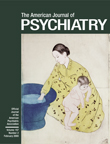This is a timely, well-edited collection of essays reflecting the observations and studies of dedicated active researchers concerned with children in a violent society. It has the strengths and weaknesses of a multiauthored volume, but the strengths greatly outweigh the weaknesses. This book will serve as an essential reference for advancing studies focused on this painful, complex, and compelling area of human tragedy. Throughout there are productive efforts to explore interventions that can ameliorate grave consequences of violence to several generations of children, adolescents, and adults.
In these seminal essays, the following recurring themes are vividly and persuasively presented:
1. The culture of poverty attracts and magnifies violence. More important, these essays demonstrate that children in poverty who are exposed to violence do not have options that middle- and upper-class children have to cope with and to mitigate as well as to overcome the trauma caused by exposure to violence. As the editor states, “The environment, that is, the social and cultural context in which families live, can help either to promote or buffer violence” (p. 263).
2. No one method or theory is sufficient or adequate to evaluate and provide a treatment rehabilitation plan for those children who are psychologically and emotionally damaged by violence. In that sense, we must remain as humble and curious about individual cases as August Aichhorn was in his 1925 classic
Wayward Youth (1), while admiring and learning from the authors of this book about population-centered studies. Soon after
Children in a Violent Society was published in 1997,
Violence in American Schools (2) was published; the two volumes complement each other in the spectrum of perspectives they provide, from clinical to sociological.
3. To a great extent, the evaluation and treatment of the individual child must be tailored to that unique child and his or her experiences, family, and neighborhood. As Jenkins and Bell state, “The issue is not to treat all violence-exposed children as if they will be devastated by the experience, but rather to approach each exposed child as one at-risk and one for whom there must be some attempt to establish his or her level of potential morbidity” (p. 27). As eloquently stated by Marans and Adelman, “When there is no one available to listen, children are alone with the distress and disorganization that so often follows their close encounters with interpersonal violence. On their own, attempts to recover from overwhelming fear, uncertainty, and helplessness may be at a very high price to children’s developmental potential as well as to the communities that have been unable to protect or support them” (p. 220).
Moving from the individual child exposed to violence to the “culture of violence,” Garbarino and Kostelny state, “One of the conclusions we draw from our observations of children coping with chronic violence in the United States today [is that] children are capable of coping with one or two major risk factors in their lives. But when risk accumulates—as with the addition of a third, fourth and fifth risk factor—we see a precipitation of developmental damage, particularly relevant to understanding the impact of chronic community violence on inner-city children” (p. 34).
As one reads this book, it is well to keep in mind that in the United States, as reported by the Centers for Disease Control, the Department of Education, and the Justice Department
(3), there is a trend toward less violence in the schools and a decrease in violent crimes committed by children and teenagers. However, due to the shocking violence of these incidences, especially because of the availability and efficiency of the weapons employed, surveys indicate that children feel less safe in schools and adults are more fearful of adolescents.
This book is a necessary and highly readable resource for those who are concerned with children in a violent society, especially if they wish to be aware of where we are and how far we have yet to travel in assuring that children receive the high priority they need and deserve.

